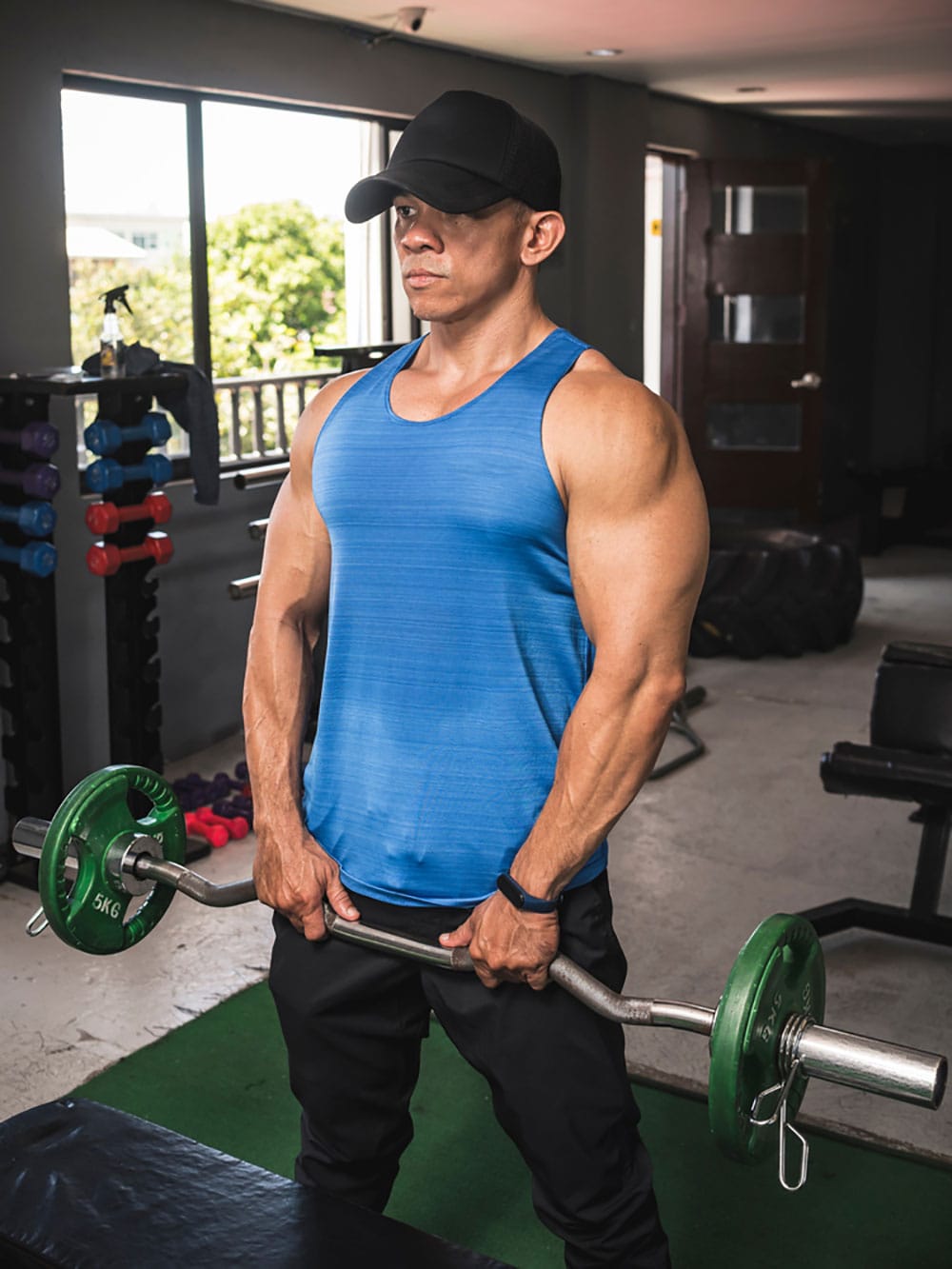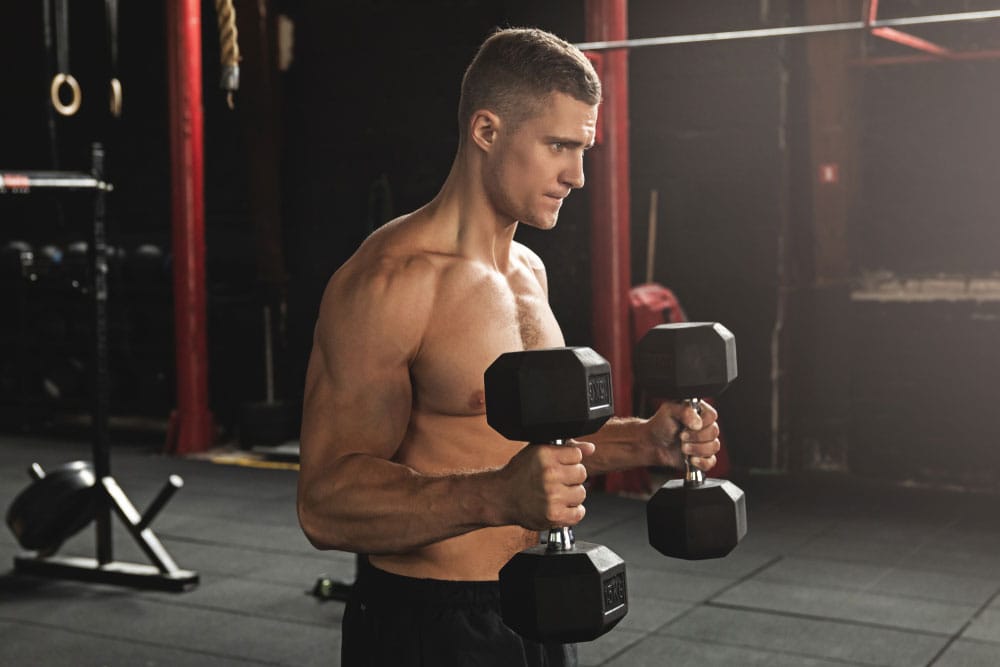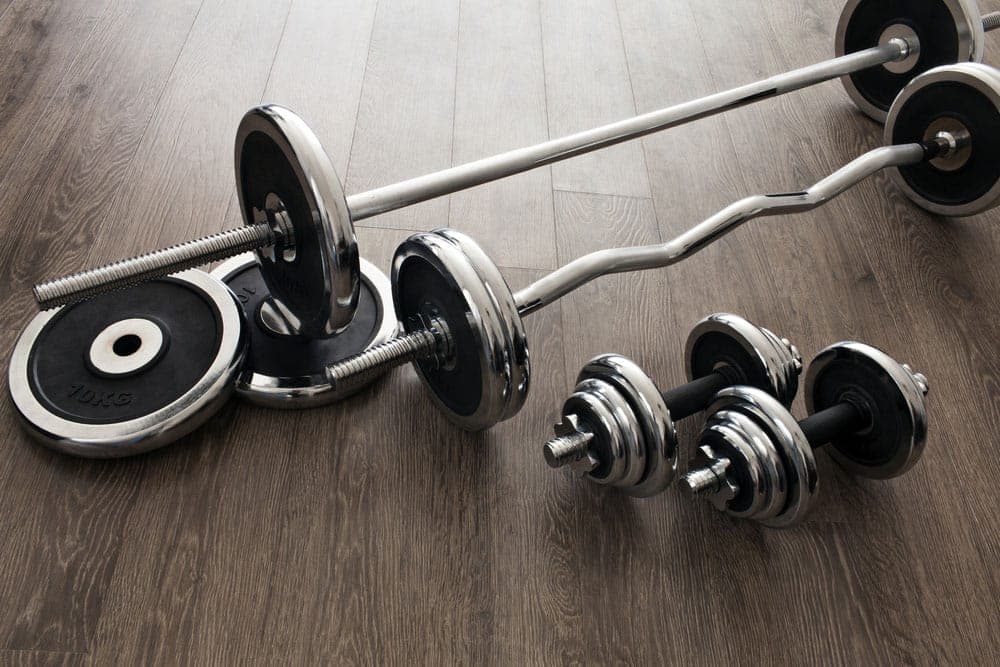Reverse Curls for Strong Arms: Benefits, Muscles Worked & Technique
This is a guide to reverse curls. Learn how this move can target your forearms for more balanced arm development.
On your quest to grow massive arms, you’re likely no stranger to the traditional bicep curl. But what if we flipped your hands around to try out reverse curls?
This unique exercise often goes neglected, since many lifters don’t make forearm training a priority. But could this move be the one you need to transform weak arms and push past lifting plateaus?
Let’s get acquainted with reverse curls and their benefits for your arms and forearms. We’ll examine which muscles reverse curls work, how to perform this move and see which type of weight works best for this lift.
What are Reverse Curls?
Reverse curls are an adaption on the standard bicep curl. This bicep curl variation, however, requires you to pronate your grip, meaning you face your palms down toward the ground rather than upward.
This targets the exercise towards your forearms, rather than putting all the emphasis on your biceps.

What Are the Benefits of Reverse Curls?
Strong Forearms
The reverse curl helps you build stronger forearms and improve the strength of your elbow flexors. It also works your biceps as a secondary muscle.
Improved Grip Strength
This is a good way to start if you don’t typically train your grip strength. The reverse curl mainly zeroes in on your brachioradialis muscles. By focusing on these smaller arm muscles they help activate the forearms that you’ll need to grip things.
If you’re not already training with hand grippers, moves like the reverse curl that force you to straighten and engage your wrists can be a great way to start developing grip strength.
Grip training is also a great crossover move that will serve you in several training styles. If you’re learning how to get better at pull-ups, hoping to sculpt your biceps with chin-ups, or even want to master muscle-up progression exercises learning to grip your bar and support your weight is the first step.
How to Do a Reverse Curl
- Set-Up: Grab a pair of dumbbells, a barbell or an EZ bar. Stand up with your feet hip-width apart, keeping your back straight and chest proud. Hold your weight with a pronated grip and let it rest against your legs. You may want to keep your thumb on the same side of your weight as your fingers to avoid overtaxing the elbows.
- Lift: Bend your elbows and pull your weight up until you feel a contraction in your biceps. Usually, this will be when your forearms and upper arms are at a 90-degree angle to one another.
- Reverse: Hold for a moment then slowly bring your weight down, working through the resistance and controlling the lowering movement.
- Reps: Perform 3-4 sets of 8-12 reps or adapt the sets and reps to your liking.
Reverse Curls— Muscles Worked
Brachioradialis
Unlike its more popular counterpart, the reverse curl isn’t a bicep curl! The main muscle you work in a reverse curl is your brachioradialis forearm muscle.
This is the shallowest muscle on the radial side of your forearm. The brachioradialis operates to flex your elbow at the forearm.
Brachialis
Not to be confused with the similarly named brachioradialis, the brachialis is considered a “pure flexor” of the forearm at your elbow. This means that, unlike the brachioradialis, it doesn’t work to supinate or pronate your forearms (turn the hands up or down).
Strengthening these muscles is also an important step in preventing isolated traumatic brachialis muscle tears. These injuries are occasionally misdiagnosed, however, it’s important to strengthen the brachialis muscles to reduce the need for treatment or rehabilitation.
You can learn more about your brachialis muscles here: Anatomy, Shoulder and Upper Limb, Brachialis Muscle.
Biceps
Secondarily, reverse curls also work the biceps brachii. When you supinate your grip (palms facing up) in a regular curl, your biceps need to flex more to get your weight up.
On the other hand, pronating your grip (palms facing down) in a reverse curl puts less direct emphasis on the biceps. However, your biceps still get a workout here, although your forearms are the main movers in this lift.
If you struggle with weak upper arms or bad bicep genetics, you’ll want to keep traditional curls in your arm routine as well.
A study of biceps brachii and brachioradialis excitation in biceps curl exercises found that using a pronated handgrip like you would in the reverse curl allows for less bicep stimulation than a supinated grip. So keep this in mind if you want to crush your biceps. You’ll need to work in both types of curls to see gains here.
You pair these moves with a dumbbell chest workout to get your pecs jacked and you should certainly have a productive upper body workout!
Anterior Deltoids
Your anterior deltoids, aka front delts, help you to raise your arms forward. They also help stabilize the humerus bones of your upper arms. Some evidence indicates that the reverse curl variation was more effective at hitting the front delts than the traditional curl or hammer curl.
Are Reverse Curls Better With Dumbbells or EZ Bar?

Ultimately what weight equipment you want to use for your reverse curls is up to you.
EZ bars are a common choice since your grip and the sideways range of motion of your hands stay the same each time you curl.
For many lifters, dumbbells feel more familiar and comfortable, but you’ll need to take added care to make sure your hands stay even with each other the whole time as you practice this move.
A preloaded barbell can also be a good choice, it just depends on what’s more comfortable for you to grip between this and an EZ bar. Since EZ bars have grooves that can serve as handhold spots, you may find they offer a better guideline for your form in this move.
Ultimately, barbell v. dumbbell is mostly a matter of personal preference. As long as you don’t start out too heavy in this lift, you can try out different types of weights to see which you like best.
Should You Lift Light or Heavy With Reverse Curls?
The brachialis and other smaller elbow flexors aren’t quite as strong as your biceps.
Although in a traditional curl, you should be able to lift quite heavy, especially once you’ve built up significant strength, you may not have the same ability to go heavy with reverse curls.
A lot of us are also guilty of skipping forearm and elbow flexor training quite frequently.
Because of this, it’s common to have weaker forearms that can feel sore or achy after even a medium-weight workout doing reverse curls.
Always start lighter and build up your strength as you improve in a reverse curl.
What’s the Difference Between Reverse Curls and Hammer Curls?

In a reverse curl, you use a fully pronated grip, meaning your palms are facing downward the whole time.
In a hammer curl, your hands sit between pronation and supination and the palms are facing in towards each other. Some people refer to this as a “neutral grip.” For example, you can do a neutral grip pull-up using bars that run perpendicular to your body and turn your palms in to face one another.
The same principle applies to hammer curls. Because of the grip position, you’ll need to swap out your equipment for dumbbells in a hammer curl.
While you can do a reverse curl with a barbell, EZ bar or dumbbells, using barbells for hammer curls would be, er, awkward, to say the least. Any type of barbell would stick out uncomfortably behind or in front of your body if you tried to use it to hammer curl.
So the other main difference between hammer curls and reverse curls is that hammer curls need to be performed with dumbbells, whereas reverse curls can use varied equipment.
The Takeaway
Whether you’re looking to lean out or bulk up, awesome arms are an essential part of working out for an aesthetic dream physique.
Reverse curls are a simple yet effective move to add to your arm-strengthening routine. It’s easy for the forearms to go neglected when it comes to training.
This move works your brachialis, brachioradialis and biceps muscles. It’s not quite as bicep-focused as a traditional bicep curl, though.
Since your hands are in a pronated position, you don’t contract your biceps as deeply as you would in a traditional curl. For overall balanced arms, the best thing to do is to train both reverse curls and traditional curls.
References
Coratella, G., Tornatore, G., Longo, S., Toninelli, N., Padovan, R., Esposito, F., & Cè, E. (2023). Biceps Brachii and Brachioradialis Excitation in Biceps Curl Exercise: Different Handgrips, Different Synergy. Sports (Basel, Switzerland), 11(3), 64. https://doi.org/10.3390/sports11030064
Lung BE, Ekblad J, Bisogno M. Anatomy, Shoulder and Upper Limb, Forearm Brachioradialis Muscle. [Updated 2024 Jan 30]. In: StatPearls [Internet]. Treasure Island (FL): StatPearls Publishing; 2024 Jan-. Available from: https://www.ncbi.nlm.nih.gov/books/NBK526110/
Oliveira, L. F., Matta, T. T., Alves, D. S., Garcia, M. A., & Vieira, T. M. (2009). Effect of the shoulder position on the biceps brachii emg in different dumbbell curls. Journal of sports science & medicine, 8(1), 24–29.
Plantz MA, Bordoni B. Anatomy, Shoulder and Upper Limb, Brachialis Muscle. [Updated 2023 Feb 21]. In: StatPearls [Internet]. Treasure Island (FL): StatPearls Publishing; 2024 Jan-. Available from: https://www.ncbi.nlm.nih.gov/books/NBK551630/
Sharma, P., Mehta, N., & Narayan, A. (2017). Isolated Traumatic Brachialis Muscle Tear: A Case Report and Review of Literature. Bulletin of emergency and trauma, 5(4), 307–310. https://doi.org/10.18869/acadpub.beat.5.4.476.
Related articles


Get fit with Flex
Build muscle & lose weight fast for free.
Available on iPhone + Apple Watch





